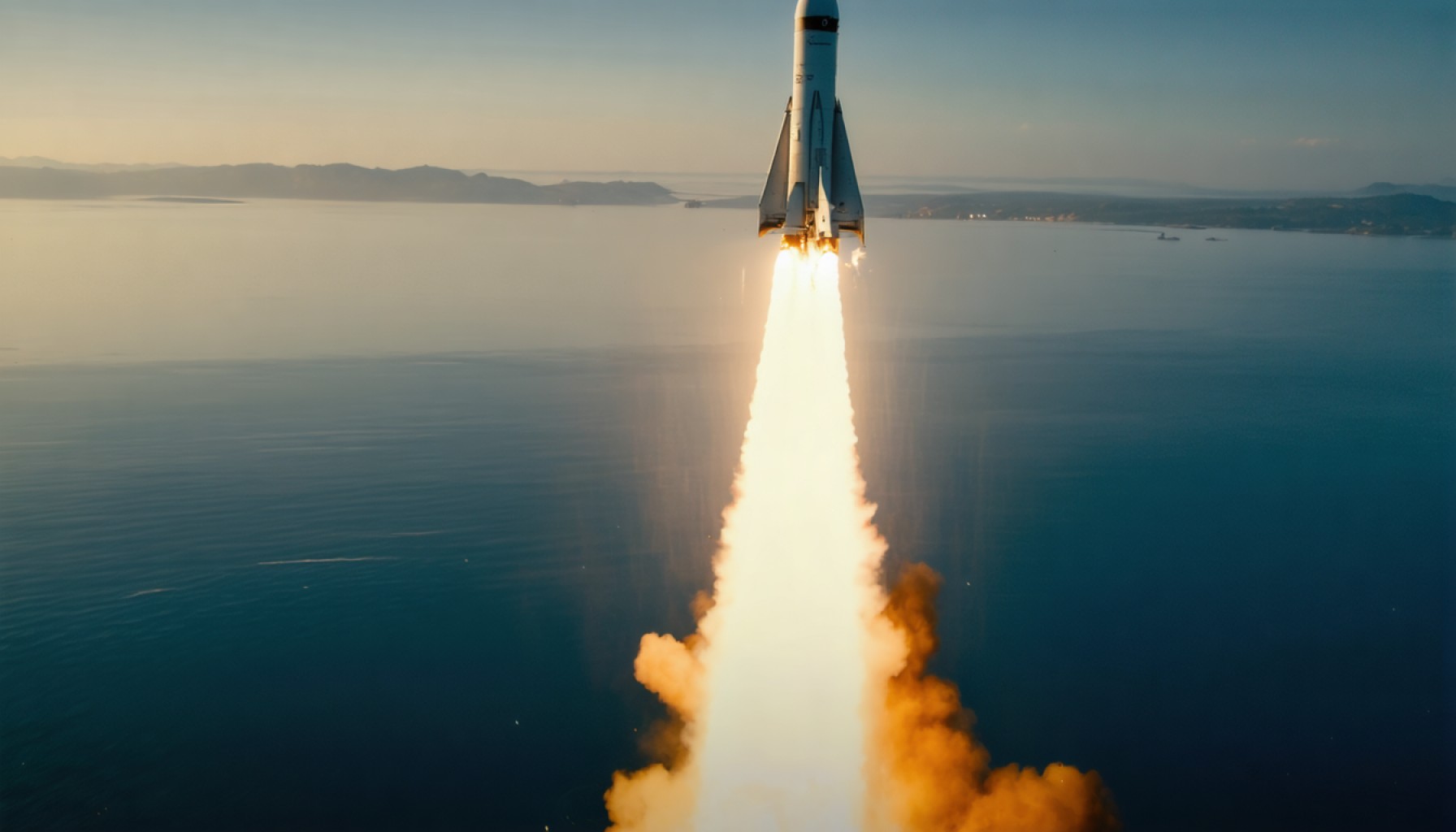- A European test rocket, launched with high aspirations, crashed into the Norwegian Sea shortly after takeoff.
- The incident underscores the fine line between success and failure in space exploration.
- The European Space Agency aims to learn from the crash, examining every component to improve future missions.
- Despite setbacks, these challenges highlight human resilience and drive for discovery.
- Each failure serves as a critical learning opportunity, propelling us toward more successful space endeavors.
- Enduring curiosity and the quest for knowledge continue to fuel advancements in space exploration.
Booming toward the bright Norwegian sky, the European test rocket promised a voyage filled with potential and cutting-edge exploration. But moments after leaving the ground, all hopes aboard the sleek projectile plummeted as it veered off course, crashing dramatically into the restless expanse of the Norwegian Sea.
Amid wings of sea spray and the cries of startled seabirds, reverberations of this unexpected descent were felt around the world. The engine’s once promising roar was now a spectral whisper of what might have been. This was more than just a failed test; it was a vivid reminder of the razor-thin line between triumph and calamity in the realm of space exploration.
The European Space Agency, looking with cautious optimism at the debris skyward, hoped to glean lessons from the wreckage lying beneath the churning waves. Engineers had anticipated potential risks, as with all experimental flights, but the realities of their arrival plunged teams into critical assessments and recalculations. Each bolt and wire became a suspect under scrutiny, revealing insights that could transform future missions.
The ethereal dance of exploration does not guarantee victory, yet faltering leaps often lead to innovative reconstructions. Such setbacks illuminate the dauntless spirit of human endeavor, pressing ever onward even when faced with the darkened veil of defeat. Mistakes are the entrusted tutors whispering the secrets needed for future flights—that tomorrow they may soar higher, steadier, and further.
In this high-stakes arena, each failure is but a stepping stone toward unfurling new dimensions of human possibility. With every launch, the echoes of splintered ambitions guide us to recalibrate our aims, forging more robust paths through space’s uncharted corridors.
Though this voyage concluded beneath the sea’s embrace, the narrative was far from its end. Explosive journeys like this reshape our perspective, reminding us that within each stumble lies the raw power to ignite the stars once more, driven by the indomitable curiosity that defines us all.
The Surprising Results from a European Rocket’s Ocean Crash
Exploring the Aftermath: Lessons from the European Rocket Crash
The recent European rocket launch, which ended disastrously in the Norwegian Sea, provides a poignant case study in the myriad challenges faced by aerospace engineers and scientists. While the immediate narrative surrounds failure, this incident offers a fertile ground for deriving insights and honing future strategies.
The Role of Failures in Space Exploration
– Valuable Lessons: Each malfunction during a rocket’s journey serves as an instrumental learning opportunity. As suggested by space exploration experts, setbacks like these often lead to technological advances that pave the way for future success.
– Risk Management Strategies: The incident highlights the importance of robust risk management frameworks. Agencies like the European Space Agency (ESA) continuously adapt by incorporating real-world data into simulations to predict potential failure points more accurately. Studies indicate that improvement in simulation technology is vital for mitigating risks in future launches.
– Engineering Redesign: Detailed post-crash analysis can lead to significant innovations. For example, the SpaceX crash analysis led to enhancements in rocket engine design and control algorithms, which later contributed to their success.
Real-World Use Cases and Comparisons
– Satellite Deployment Competitions: Understanding the strengths and weaknesses of various launch systems gives rise to competitive enhancements. The European mislaunch sheds light on different market offerings, enhancing competitive dynamics between entities like ESA, SpaceX, and NASA.
– Cost vs. Reliability Analysis: Deciphering failure incidents is crucial for policymakers and investors in balancing cost-efficiency with reliability. Enhanced testing can reduce mission failures, but this comes at a financial premium.
Market Outlook and Innovations
– Growing Space Economy: As suggested by market analysts, the global space economy is projected to surpass $1 trillion by 2040. Lessons drawn from failures are integral in driving innovation and efficiency, crucial to capture larger market shares.
– Private Partnerships: Increased collaboration between government space agencies and private companies could distribute risks and foster rapid technology development.
Technological and Industry Trends
– Reusable Rockets: The ongoing conversation around reusability, sparked by players like SpaceX, gains traction. The analysis of failed missions contributes to refining reusable launch systems.
– AI Integration: Incorporating AI for predictive maintenance and anomaly detection is a significant trend. AI can play a role in assessing rocket component health, preventing failures preemptively.
Tips and Recommendations
– Embrace Partnerships: Collaborative ventures between agencies and private companies can provide shared resources and insights, reducing developmental pressures.
– Focus on Simulation Technology: Investing in next-gen simulation technologies could drastically reduce potential errors uncovered in real-world tests.
– Continuous Learning: Adapt continuous learning models from organizations that manage rapid iteration and data analysis, fostering a proactive rather than reactive development environment.
Related Keywords
Space Exploration, Rocket Failure Analysis, European Space Agency, Aerospace Innovation, Market Forecasts, Risk Management in Space Missions
For more information on aerospace developments, consider visiting the European Space Agency.
By leveraging these insights garnered from each hurdle, the quest for celestial exploration arms itself with fortitude and foresight, transforming each setback into a compass for future triumphs. Embracing mistakes as allies is the key to venturing into space’s fascinating yet unforgiving expanse.
